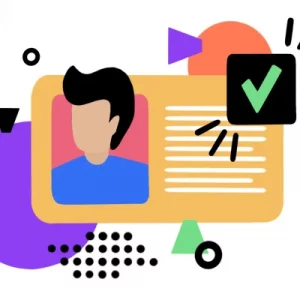Working from home used to be an added perk, but since COVID-19 hit and brought its sidekick social distancing with it, remote work has suddenly become a necessity in order to keep your business running at all. Of course, getting the systems in place to make a distributed workforce function is the first step. But in order for it to be successful, you must keep employees engaged. The question is, how, particularly if remote work is new to most of your employees? We’re so glad you asked!
Scared of Social Distancing
Social distancing on the scale we’re seeing due to the COVID-19 pandemic may be new, but the concept of employees working without being ‘seen’ has struck fear in the heart of corporate America for years. The “If I can’t see them, how do I know they are working?” mindset while less, is still very much prevalent. That’s why, pandemic aside, it could be a good thing to just rip the Band-Aid off so we can see how well a distributed workforce could work for businesses now and over the long-term.
Tips for Working Together Remotely
According to Buffer’s recent “State of Remote Work,” some of the biggest struggles for remote workers already in the trenches before COVID-19 are communication, collaboration, and loneliness. These issues are typically most prevalent when the distributed employees are interacting with coworkers who are primarily office-based. So, now that we’re all on a level playing field so to speak, there’s a tremendous opportunity for success.
- Communicate, Communicate, Communicate – And then communicate some more. Not only is it important to keep employees informed during this challenging time, but honest and frequent communication will also establish trust. Particularly during the transition to remote work, leadership, managers, and HR should remain ‘visible’ and readily accessible with clearly communicated availability. Make sure to enable quick, two-way communication for teams with chat tools to not only aid in collaboration but to keep the connection strong. Also, put in place a constructive feedback loop so you can respond to any issues that may arise.
- Set Clear Expectations – Distributed employees need to know what success looks like in order to be productive. If you already have some who work remotely, look at what’s been successful and where you can improve in order to establish company-wide protocols for this new work environment. Managers should set clear goals and be guided to focus on performance outcomes rather than micromanaging. Investing in project management tools can help with this as they allow you to assign and track tasks, deadlines and other directives in real-time giving employees autonomy and managers the accountability they need.
- Schedule Common Working Time – Although one of the advantages of working remotely is the flexibility to work when you’re most productive, it’s important particularly as you transition to have time when teams are ‘online’ together. This can be challenging with employees in different time zones, but having at least one or two hours a day when you know that coworkers are available if you reach out can be invaluable. It establishes a level of comfort and is ideal for meetings and work that requires collaboration. Plus, you can look forward to talking with someone other than the dog during the day!
- Get Face to Face – Similarly, having regular team meetings where you can actually see the faces of coworkers helps you to stay connected. Some companies even hold virtual company-wide meetings which could be tremendously reassuring during this time. Video conferencing tools have come a long way. You can do just about anything that’s possible in an in-person meeting such as presentations, white boarding and of course take in the all-important non-verbal cues. Make sure you set aside enough time for non-work conversation just as you would in the office though. It can really lighten the mood, and we all need that right now.
- Team Building – Chances are, you have a variety of in-person team building events throughout the year. It’s no secret this is key to an engaged workforce. Moving to a distributed environment doesn’t diminish the importance of this, nor does it make it impossible. Think about hosting virtual coffee breaks, lunches, happy hours or even compete in games together. At a minimum create a separate chat channel or group that’s dedicated to non-work conversation, just like you’d ordinarily have around the water cooler or in the break room. Even small touches like encouraging teams to say hi when they log in and goodbye at the end of the day can make a difference.
- Recognize Accomplishments – Admittedly this can fall to the wayside even in an office environment, but especially when the workforce is distributed. Yet there’s almost no better confidence builder and motivator for an employee than knowing your hard work will be noticed. In fact, it may be even easier to do now with project management tools that show results in real time. Beyond traditional means of recognizing employees through their manager or HR programs, you could set up peer-to-peer recognition as well.
- Emphasize Culture – Your culture isn’t just within the walls of your office, its lives in your employees. And it’s arguably more important than ever to emphasize it when you’re miles apart. Make your mission, vision, values and branding front and center in all your technology platforms. Talk about culture; show how employees are embodying it in their home offices and in their interactions with coworkers and customers/clients. It’s what connects you and makes your company unique; value that and employee loyalty will follow!
- Support Them – Some employees and some positions are ideally suited for remote work. For others, it can be more difficult. Just as you onboard new employees and support professional development you can look at transitioning to a distributed workforce the same. Consider training in time management skills, goal setting or even just offering tips on working from home. Posting frequently asked questions can go a long way as well.
Remember, you have a partner in Vetty to help you feel more confident in your distributed workforce with Vetty Pulse, our court level monitoring solution.




